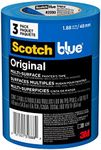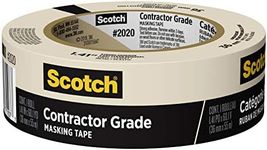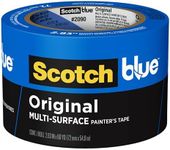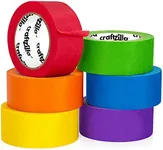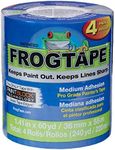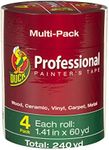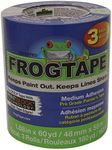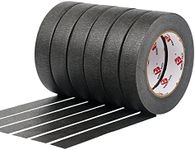Buying Guide for the Best Painters Tape
Choosing the right painter's tape can make a big difference in the quality of your painting project. Painter's tape is designed to help you achieve clean, sharp paint lines and protect surfaces you don't want to paint. The best tape for you depends on the surfaces you're working with, the type of paint you're using, and how long you need the tape to stay in place. Understanding the key features of painter's tape will help you select the right one for your needs and avoid common issues like paint bleed or surface damage.Adhesion LevelAdhesion level refers to how strongly the tape sticks to surfaces. This is important because too much adhesion can damage delicate surfaces when removed, while too little can cause the tape to peel off or allow paint to seep underneath. Painter's tapes are usually labeled as low, medium, or high adhesion. Low adhesion tapes are best for delicate surfaces like freshly painted walls or wallpaper, medium adhesion works well for most interior walls and trim, and high adhesion is suitable for rough or outdoor surfaces. To pick the right one, consider the surface you are taping—delicate surfaces need gentler adhesion, while rougher or exterior surfaces may require stronger stickiness.
WidthThe width of painter's tape determines how much area it covers and how much protection it offers. Narrow tapes (around 0.5 to 0.75 inches) are good for detailed work or tight spaces, while wider tapes (1 inch or more) provide more coverage and are better for protecting larger areas or creating bold lines. Choose a width that matches the precision you need and the size of the area you want to protect. For most general painting, a medium width is a safe choice, but for intricate designs or small trim, go narrower.
Clean Removal TimeClean removal time tells you how long the tape can stay on a surface before it becomes difficult to remove without leaving residue or damaging the surface. This can range from a few days to several weeks. Shorter clean removal times are ideal for quick projects, while longer times are better if you need to leave the tape on for extended periods, such as during multi-day projects. Think about how long your project will take and choose a tape that matches that timeline to avoid sticky residue or peeling paint.
Surface CompatibilitySurface compatibility indicates which types of surfaces the tape is designed for, such as walls, wood, glass, or metal. Some tapes are made specifically for delicate surfaces, while others are formulated for rough or outdoor surfaces. Using the wrong tape can result in poor adhesion or surface damage. Always check the tape's label for recommended surfaces and match it to the material you are working with to ensure the best results.
UV ResistanceUV resistance means the tape can withstand exposure to sunlight without breaking down or leaving residue. This is especially important for outdoor projects or areas with a lot of natural light. Tapes with higher UV resistance can stay on surfaces longer without deteriorating. If you are working outdoors or in sunny rooms, look for a tape that mentions UV resistance to ensure it performs well and removes cleanly.
